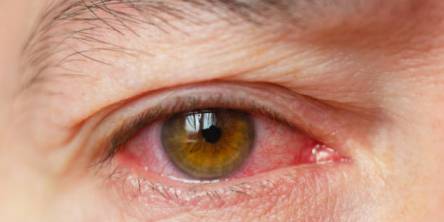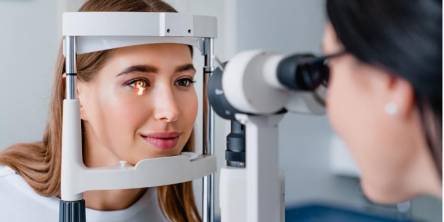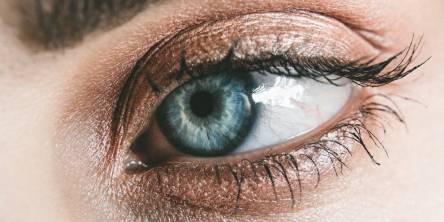Clinical Significance of Chandraprabha Vati in Eye Disorders

ABSTRACT
Chandraprabha vati is a standardized herbal formulation mentioned in our ancient texts. This medicine is a mix of various ingredients in a tablet (Vati) form. Chandraprabha vati is a Rasayan (Rejuvenator) and Balaya (Strengthening). It is an analgesic, antispasmodic, anti-hyperglycemic, and a good blood purifier. It is indicated in a number of disorders.
Chandraprabha vati is made up of two words Chandra and Prabha. In Sanskrit, Chandra means moon and Prabha means glow. It is a mix of 37 herbs like Shilajit (Asphaltum), Guggul (Commiphora mukul), Karpoor (Cinnamomum camphora), Vacha (Acorus calamus), etc.
INTRODUCTION
Chandraprabha vati can be taken as a medicine for managing various disorders, as an immunomodulator, or as a supplement. It is digestive, diuretic, antacid, laxative, diaphoretic, haematinic, and antimicrobial in pharmacological action. Chandraprabha vati is mainly indicated in urogenital disorders. It manages a wide range of diseases like diabetes, urogenital diseases like ashmari (urinary canaliculi), excessive urination, burning sensation during urination, and retention of urine associated with abdominal pain, albuminuria, spermatorrhoea, leucorrhea, renal calculi, anemia, jaundice, eye disorders, etc. In addition, it also helps in the purification of all dhatus along with blood. It also manages loss of appetite, decreased digestive fire (Mandagni), irregularity in the menstrual cycle (Polymenorrhea and oligomenorrhea), etc.
INGREDIENTS
According to Sharangdhar Samhita (Madyam Khanda), there are 37 herbal ingredients in Chandraprabhavati which are given below:
- Karpoor Cinnamomum camphora) /Chandraprabha
- Guggul (Commiphra mukul)
- Sharkara (Sugar)
- Shilajit (Ashphaltum)
- Vacha (Acorus calamus)
- Mustak (Cyperus rotundus)
- Haridra (Curcuma longa)
- Amalaki (Emblica officinalis)
- Cavya (Piper chaba)
- Vidanga (Emblia ribes)
- Guduchi (Tinospora cordifolia)
- Shunthi (Zingiber officinalis)
- Maricha (Piper nigrum)
- Pippali (Piper longum)
- Sarjikashaar (Sodium carbonate)
- Yavkshar (Potassium carbonate)
- Saindhav Lavan (Rock salt)
- Sauvarchal Lavan (Sodium sulphate)
- Vida Lavan (Black salt)
- Danti (Baliospermum montanum)
- Dalchini (Cinnamomum zeylanica)
- Tejpatta (Cinnamomum tamala)
- Ela (Elettaria cardamomum)
- Kiratatikta (Swertia chirata)
- Devdaru (Cedrus deodara)
- Ativisha (Aconitum heterophyllum)
- Daruharidra (Berberis aristata)
- Pippali mool (Piper longum root)
- Chitrak mool (Plumbago zeylanica)
- Trivrit (Ipomea turpethum)
- Vanshlochan (Bambusa arundinacea)
- Hareetaki (Terminalia chebula)
- Dhanyak (Coriandrum sativum)
- Bibhitaki (Terminalia belerica)
- Gajapippali (Scindapsus officinalis)
- Swarnamakshik bhasma (Iron pyrites)
- Loha bhasma (Iron)
Benefits of Herbal Ingredients
1. Chandraprabha/ Karpoor (Cinnamomum camphora): Karpoor is madhura (sweet), tikta (bitter), and katu (astringent) in rasa. It has a cold potency. It balances Kapha. Chandraprabha has cooling and lekhan(scraping) properties. It is a good analgesic, antispasmodic, rubefacient, and nasal congestion. It manages eye disorders, acidity, cough, skin disorders, etc.
2. Shilajit (Asphaltum): In Sanskrit, Shilajit means “The destroyer of weakness”. Shilajit is a mineral-rich herb obtained from Himalayan rocks. It removes excess kapha from the body. It promotes normal blood sugar, kidney and liver health and also slows down the process of ageing. It contains carotenoids, fulvic acid, and many other minerals. It is used for a variety of diseases like Anaemia, Diabetes, Heart diseases, Liver diseases, Obesity, High cholesterol, Altitude sickness, Alzheimer's disease, and Fertility issues, etc.
3. Guggul (Commiphora mukul): In Ayurveda, Guggul is considered a great vednasthapaka (analgesic). It is tridoshahar (balances all three dosha is. vata, pitta and kapha) and rejuvenator. Guggul is indicated in a number of diseases like Arthritis, heart disease, obesity, jaundice, gout, cough, diabetes, etc.
4. Sharka (Sugar): Sharkara is a rich source of glucose. It is cold in potency and decreases burning sensation and is useful in various bleeding disorders, vomiting, skin diseases, ulcers, etc.
5. Vacha (Acorus calamus): In Ancient texts, Vacha is considered as Sangyasthapak (Restores consciousness). It increases digestive fire and improves digestion (Deepan and Pachan), is used in managing flatulence, and Unmada (Psychosis). It also relieves diarrhoea and dysentery.
6. Mustak (Cyperus rotundus): Mustak is deepaniya (stimulates digestive fire) in pharmacological action. It is cold in potency and manages fever, diarrhoea, IBS and anorexia.
7. Haridra (Curcuma longa): Haridra is considered Kushtaghan (treats skin diseases). Haridra is hot in potency and contains curcumin as an active ingredient. Curcumin is anti-inflammatory in nature. It is indicated in skin diseases, urticaria, hives, wheals, diabetes, anaemia, hyperlipidemia, edema, arthritis, etc.
8. Amalaki (Emblica officinalis): Amalaki is a great Rejuvenator(Rasayan). It is a rich source of vitamin C. It contains all 5 rasas except Lavan(salt). Amalaki balances all 3 doshas(Vatta, Pitta, and Kapha). Amalakis' medicinal properties make it a boon for eye disorders, diabetes, and bleeding disorders.
9. Cavya (Piper chaba): Chavya is categorised under the Panchakola group of herbs. It balances Vata, Kapha and also increases digestive fire. It helps in managing anorexia, all types of abdominal pain, bloating, worm infestation, diarrhoea, etc.
10. Vidanga (Embelia ribes): Vidanga is considered as Krimighan (Destroys worms) in Ayurveda. It contains Emebelin as an active ingredient. Because of its warm potency, it manages agnimandya(reduced digestive fire), Shula(Pain), flatulence, worm infestation, and constipation.
11. Guduchi (Tinospora cordifolia): Guduchi is a Rasayan and tikta(bitter), kashaya(astringent) in rasa. It is hot in potency and balances all 3 doshas in the body. It is Balya(Strengthening), Agnideepak (Improves digestion), sangrahi(Increases absorption in stomach and intestines), and manages a wide range of diseases like Diabetes, Fever, Hyperlipidemia, Gout, Cystitis, etc.
12. Shunthi (Zingiber officinalis): Shunthi is hot in potency and balances Kapha. Due to its deepan pachan action, it is a good carminative and digestive. Arthritis, Anaemia, Obesity, and Digestive problems can be managed with Shunthi.
13. Maricha (Piper nigrum): Maricha pacifies aggravated Kapha and Vata. It is used in managing asthma, worm infestation, and digestive disorders.
14. Pippali (Piper longum): Pippali is considered as Kashar(Treats Cough) in Ayurveda. It also improves digestion and eliminates ama(Toxins accumulated in the body due to indigestion).
15. Sarjikakshara (Sodium carbonate): Sarjikakshara is an ayurvedic medicine that balances Vata and Kapha due to warm potency. It is indicated in abdominal lump(Gulma), bloating, worm infestation, Gastritis, Skin diseases, arthritis, etc.
16. Yavakshar (Potassium carbonate): It is an alkali preparation that balances Vata and Kapha. It is used to treat bloating, UTI, urine calculi, distension of abdomen, splenic disorders, ascites, etc.
17. Saindhav Lavan (Rock salt): Saindhav Lavan is cold in potency and balances Pitta. It improves digestion and cough. It helps in managing joint disorders, digestive issues, respiratory disorders, etc.
18. Sauvarchal Lavan (Sodium sulphate): Sauvarchal Lavan is hot in potency and easy to digest. It is suitable for the heart and manages abdominal distension, abdominal pain, belching, constipation, etc.
19. Vida Lavan (Black salt): Vida Lavan is hot in potency and balances Vata and increases Pitta. It is helpful in various digestive disorders.
20. Danti (Baliospermum montanum): In Ayurveda, Danti is considered Tikshanavirechak(Strong purgative). It is Usna in potency. Danti is used for managing ascites, liver disorders, constipation, obesity, abdominal distension, abdominal lump (gulma), etc.
21. Dalchini (Cinnamomum zeylanica): Dalchini is hot in potency. It helps in balancing Vata and Kapha. Cinnamon is used to manage anorexia, worm infestation, cough, rhinitis, etc.
22. Tejpatta (Cinnamomum tamala): Tejpatta pacifies aggravated Vata and Kapha. It is antimicrobial and hypoglycemic in action. It is used to treat indigestion, anorexia, gingivitis, shotha (inflammation), obesity etc.
23. Ela (Elettaria cardamomum): Ela is considered Dahprashamak in Ayurveda. It balances Vata and Kapha. It is cold in potency and manages bad breath, dysuria, cough and cold etc.
24. Kiratatikta (Swertia chirata): Kiratatikta is a herb that is cold in potency and balances Pitta and Kapha. It is used to manage excessive thirst, fever, cold, eczema, anorexia, skin diseases, UIT, etc.
25.Devdaru (Cedrus deodara): Devdaru is considered as Vednasthapak(Analgesic) in Ayurveda. It is Tikta in rasa and hot in potency and helps in managing body aches, diabetes, edema, hiccups, constipation, etc.
26. Ativisha (Aconitum heterophyllum): Ativisha is deepaniya(stimulates digestive fire) in action due to its warm potency. It provides relief in diarrhoea, cough, cold, vomiting, arthritis, edema, fever, etc.
27. Daruharidra (Berberis aristata): Daruharidra is considered Yakritya(manages liver disorders) in Ayurveda. It manages liver and splenic disorders, jaundice, eye, and ear disorders.
28. Pippali mool(Piper longum root): Pippali mool is hot in potency and balances Kapha and Vata dosha. Pippalimoola is carminative, digestive and manages anorexia, bloating, digestive disorders, etc.
29. Chitrak mool (Plumbago zeylanica): Chitrak moola is considered Deepaniya in action. It manages cough, cold, anorexia, rheumatoid arthritis, skin diseases, etc.
30. Trivrit (Ipomoea turpethum): Trivrita is considered a Sukhavirechak(Purgative). It balances Pitta and Kapha and balances Vata. It helps in managing chronic constipation, worm infestation, obesity, ascites, gout, etc.
31. Vanshlochan (Bambusa arundinacea): Vanshlochan is cold in potency and balances Kapha and Pitta dosha. It is indicated in bleeding disorders, inflammation, dysuria, urinary retention, burning sensation in the eyes and body, etc.
32. Haritaki (Terminalia chebula): Haritaki is considered a rejuvenator (Rasayan). It balances all three doshas (Vata, Pitta, and Kapha). It helps in managing anaemia, diabetes, and eye disorders.
33. Dhanyak (Coriandrum sativum): Dhanyak is hot in potency and balances all three doshas. It is stimulant, digestive, carminative and diuretic. Dhanyak is used to treat vomiting, diarrhoea, excessive thirst, burning sensation etc.
34. Bibhitaki (Terminalia belerica): Vibheetaki is kshaya(astringent) in rasa and hot in potency. It balances Pitta and Kapha. It is used to manage ulcers, discoloration of hair, dandruff, etc.
35. Gajapippali (Scindapsus officinalis): Gajapippali is kapha shamak and useful in managing diarrhoea, throat disorders, worm infestation and cough.
36. Swaranmakshik bhasma (Iron pyrites): Swaranmakshik Bhasam balances Kapha and Pitta. It is used to treat UTIs, skin diseases, insomnia, and anorexia.
37. Lauh bhasma (Iron): It is rich in iron and balances Pitta and Kapha. It is used to treat anemia, eye disorders, and skin disorders.
Health Benefits of Chandraprabha Vati
Clinical Significance of Chandraprabha Vati in Eye Disorders
- The eyes are the site of tejo (Fire) mahabhut and the upper part of our body is Kapha dominant. Due to the aggravation of Kapha dosha, there are chances of eye disorders.
- Chandraprabha Vati is Tridosha Shamak. It contains Triphala, Suvaranmakshik, and Loha Bhasam which are helpful in eye disorders.
- The presence of Shilajit and Gugglu and Chandraprabha vati makes it Kaphaghan (balances Kapha) and a good rejuvenator thereby treating eye disorders.
- Chandraprabha vati is used to manage excessive lacrimal secretion, and eye disorders that involve Kapha Dosha.
Conclusion
From the above article, it can be concluded that Chandraprabha vati can be used to manage a variety of disorders like diabetes, eye disorders, UTI, skin disorders, liver disorders, etc. It acts on all three doshas (Vatta, Pitta and Kapha) and the overall body. It balances Kapha dosha and thereby manages eye disorders.
Similar Articles
Discover effective non-surgical presbyopia treatment alternatives, including eye drops, lenses, and therapies to improve near vision without surgery.
Hyperopia is a genetic trait that runs in families. Children are frequently born with it, and it generally goes unreported since the eyes can adjust themselves, and blurred vision is not an issue.
Pink eye is an infection or inflammation of the conjunctiva, the transparent tissue that covers the inside surface of your eyelid and the outer membrane of your eyeball.
Considering the critical role that your eyes play in your overall well-being, it's important to protect it from any form of damage.
It is critical to ensure your child's overall health and vision. It is critical to schedule eye examinations for babies and young children throughout their early development. This is because early-onset eye problems can have a long-term influence on their eyesight
Maintaining eye health becomes increasingly important as people age. This is especially true for seniors, who are more susceptible to vision problems and eye conditions. Regular eye exams benefit older adults by helping protect healthy vision and prevent severe eye diseases.
Maintaining good eye health is crucial for overall well-being, yet many people overlook the importance of regular eye exams. Whether you’re searching for a “walk in eye exam near me” or scheduling an appointment with your regular optometrist, understanding the benefits of these exams can help you prioritize your eye health
People with diabetes who take Ozempic are at risk of developing not only diabetic retinopathy but also cataracts, glaucoma, and dry eye. Some eye symptoms, such as dry eyes, might be caused by both an underlying health issue and a pharmacological side effect, such as semaglutide-induced dehydration.
In today's digital age, we are constantly exposed to screens of various devices such as smartphones, laptops, and tablets. While these technological advancements have greatly improved our lives, they also come with a downside - digital eye strain.









